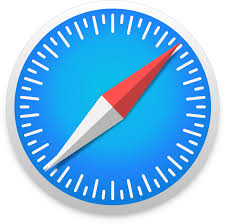HTML audio Tag: Main Tips
- The HTML
<audio>element embeds sound content into web pages. - The closing tag for the HTML
<audio>tag has to be included. - It is possible to list multiple sources of the sound content to guarantee that the audio works for the majority of visitors.
Use of audio
The HTML <audio> element adds audio content to web pages.
Remember: the HTML <audio> tag supports the following file formats - mp3, wav and ogg.
<audio controls>
<source src="bitdegree.org/learn/I_Cactus_-_05_-_ruby_cactus.mp3" type="audio/mpeg"">
<p>If audio does not start, the <audio> HTML element is not supported in your browser.</p>
</audio>Note: the text inside the HTML audio tags will be visible only if the browser does not support the audio element.

- Easy to use with a learn-by-doing approach
- Offers quality content
- Gamified in-browser coding experience
- The price matches the quality
- Suitable for learners ranging from beginner to advanced
- Free certificates of completion
- Focused on data science skills
- Flexible learning timetable

- Simplistic design (no unnecessary information)
- High-quality courses (even the free ones)
- Variety of features
- Nanodegree programs
- Suitable for enterprises
- Paid Certificates of completion

- A wide range of learning programs
- University-level courses
- Easy to navigate
- Verified certificates
- Free learning track available
- University-level courses
- Suitable for enterprises
- Verified certificates of completion
Attributes for audio
autoplay
autoplay specifies whether the audio should play automatically after a web page loads.
<audio controls autoplay>
<source src="https://cdn.bitdegree.org/learn/I_Cactus_-_05_-_ruby_cactus.mp3?raw=true" type="audio/mpeg">
<source src="https://cdn.bitdegree.org/learn/I_Cactus_-_05_-_ruby_cactus.wav?raw=true" type="audio/wav">
<source src="https://cdn.bitdegree.org/learn/I_Cactus_-_05_-_ruby_cactus.ogg?raw=true" type="audio/ogg">
<p>If audio does not start, the <audio> HTML element is not supported in your browser.</p>
</audio>controls
HTML audio controls indicate whether the audio player should have control buttons (play, pause, volume, etc.).
<audio controls>
<source src="https://cdn.bitdegree.org/learn/I_Cactus_-_05_-_ruby_cactus.mp3?raw=true" type="audio/mpeg">
<source src="https://cdn.bitdegree.org/learn/I_Cactus_-_05_-_ruby_cactus.wav?raw=true" type="audio/wav">
<source src="https://cdn.bitdegree.org/learn/I_Cactus_-_05_-_ruby_cactus.ogg?raw=true" type="audio/ogg">
<p>If audio does not start, the <audio> HTML element is not supported in your browser.</p>
</audio>loop
loop specifies whether the audio will start over again after it ends.
<audio controls loop>
<source src="https://cdn.bitdegree.org/learn/I_Cactus_-_05_-_ruby_cactus.mp3?raw=true" type="audio/mpeg">
<source src="https://cdn.bitdegree.org/learn/I_Cactus_-_05_-_ruby_cactus.wav?raw=true" type="audio/wav">
<source src="https://cdn.bitdegree.org/learn/I_Cactus_-_05_-_ruby_cactus.ogg?raw=true" type="audio/ogg">
<p>If audio does not start, the <audio> HTML element is not supported in your browser.</p>
</audio>muted
muted indicates whether the audio should be muted after it loads.
<audio controls muted>
<source src="https://cdn.bitdegree.org/learn/I_Cactus_-_05_-_ruby_cactus.mp3?raw=true" type="audio/mpeg">
<source src="https://cdn.bitdegree.org/learn/I_Cactus_-_05_-_ruby_cactus.wav?raw=true" type="audio/wav">
<source src="https://cdn.bitdegree.org/learn/I_Cactus_-_05_-_ruby_cactus.ogg?raw=true" type="audio/ogg">
<p>If audio does not start, the <audio> HTML element is not supported in your browser.</p>
</audio>preload
preload requires a specific preload behavior from the browser. Possible values are the following:
nonespecifies that the audio should not be preloaded.metadataspecifies that only the metadata (length) is retrieved.autospecifies that the audio can be downloaded.
<audio controls preload="none">
<source src="https://cdn.bitdegree.org/learn/I_Cactus_-_05_-_ruby_cactus.mp3?raw=true" type="audio/mpeg">
<source src="https://cdn.bitdegree.org/learn/I_Cactus_-_05_-_ruby_cactus.wav?raw=true" type="audio/wav">
<source src="https://cdn.bitdegree.org/learn/I_Cactus_-_05_-_ruby_cactus.ogg?raw=true" type="audio/ogg">
<p>If audio does not start, the <audio> HTML element is not supported in your browser.</p>
</audio>src
src indicates the URL source of the audio file.
<audio src="https://cdn.bitdegree.org/learn/I_Cactus_-_05_-_ruby_cactus.mp3?raw=true" controls>
<p>If audio does not start, the <audio> HTML element is not supported in your browser.</p>
</audio>Browser support

Chrome

Edge

Firefox

IE

Opera

Safari
Mobile browser support

Chrome

Firefox

Opera

 HTML
HTML  CSS
CSS  PHP
PHP  JavaScript
JavaScript  SQL
SQL  Bootstrap
Bootstrap  Solidity
Solidity  jQuery
jQuery  Git
Git  Chrome DevTools
Chrome DevTools  C++
C++  Python
Python 



